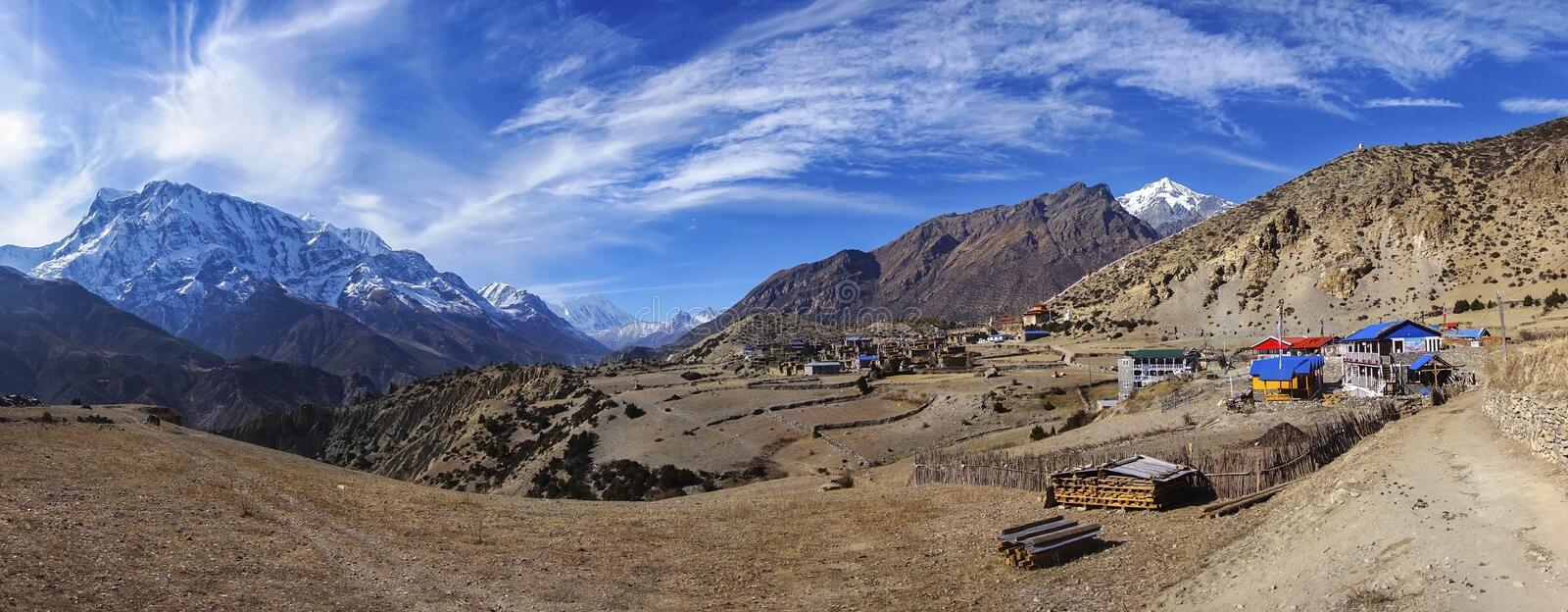

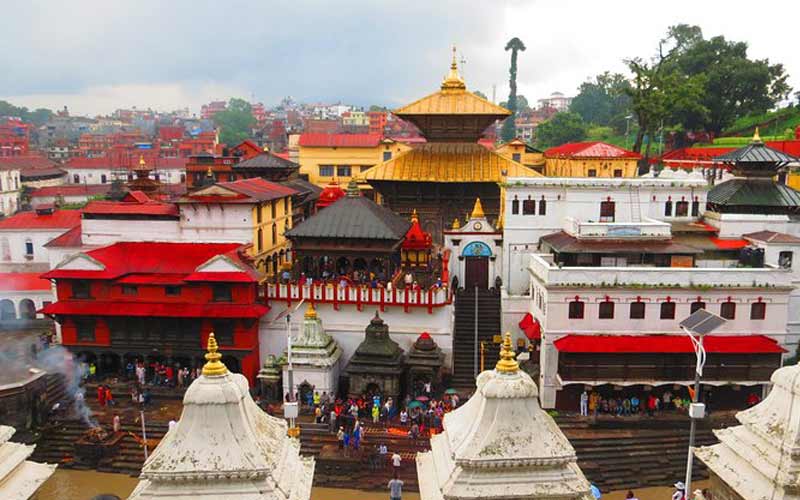
If you are planning to do any kind of Trekking in Nepal and then please don’t miss to do 1/2 days Heritage tour in Nepal. One of the most sacred Hindu temples in the world, Pashupatinath is a millennia old temple dedicated to Lord Shiva. The temple complex consists of the main temple and compound, surrounded by a variety of smaller temples, ashrams and sculptures and is bordered by the holy Bagmati River to the east. Entry to the main temple is allowed only for Hindus but everyone is free to observe from the hills beside the Bagmati riverbanks. Observing the various rituals, ceremonies as well as funeral is a fascinating experience for tourists. A testament to the importance of this temple is the sheer amount of pilgrims it attracts, particularly during the holy occasions like Teej and Shivaratri where visitors number to hundreds of thousands in a single day. The Pashupatinath Temple was one of the first sites in Nepal to be designated as a UNSECO World Heritage Site (1979).
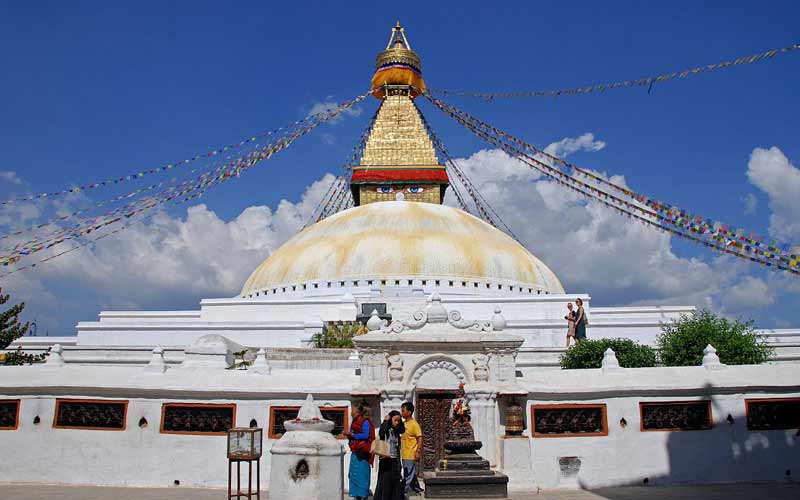
If Pashupatinath is the holiest Hindu temple in Kathmandu, then its Buddhist counterpart has to be the Boudhanath Stupa. There are a number of Newar as well as Tibetan Buddhist myths and legends surrounding this amazing stupa's origin while some records state that it was built by a Licchavi King Sivadeva as far back as the 5th Century CE. In present day, it is one of the largest Buddhist stupas in the world and the whole surrounding area is a Buddhist-populated settlement with over 40 monasteries nearby. A large number of tourists, pilgrims as well as locals visit the Stupa every day, each for their own reasons. Chanting monks, spinning prayer wheels, flocks of pigeons, and the smell of incense are just a few factors that make up the unique atmosphere of this location.
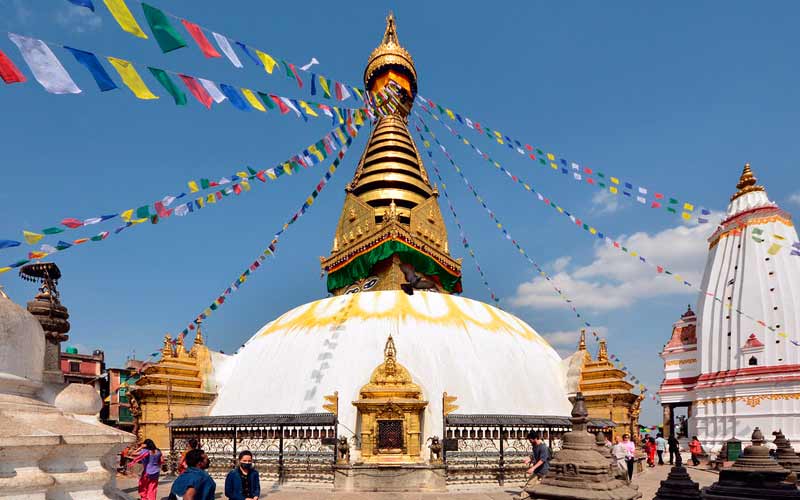
Swayambhunath Stupa is one of the oldest monuments in Nepal, with its origins being tied to the origin of Kathmandu valley itself. Historical records and inscriptions have traced the origins of this stupa complex as far back 1500 years ago while religious myths and stories go even further. It is said that Swayambhunath, literally meaning self-sprung, was formed after the lake dried out gave rise to the current valley. This hilltop stupa is an amazing mixture of Hindu shrines and Buddhist stupas; two different forms of architecture co-existing in harmony. It is said there are 365 steps on the stairs that lead up to Swayambhunath. Aside from being a holy location for Hindus as well as Buddhists, the ideal location also means the view overlooking most of the Kathmandu valley is superb from here.
.jpg)
Considered as the oldest temple in all of Nepal, Changu Narayan is a Hindu temple dedicated to Lord Vishnu. It is situated on a high hilltop that is also known as Changu or Dolagiri and is surrounded by forest with a champak tree and a small village known as Changu Village. The temple is located around 14 kilometers east of Kathmandu. The stone inscriptions and pillar along with the temple and its various statues themselves have recorded it to be built as far back as the 464 AD. An information center as well as couple of museums are located in the vicinity if you would like to dwell further into the rich history and fascinating myths of Changunarayan.
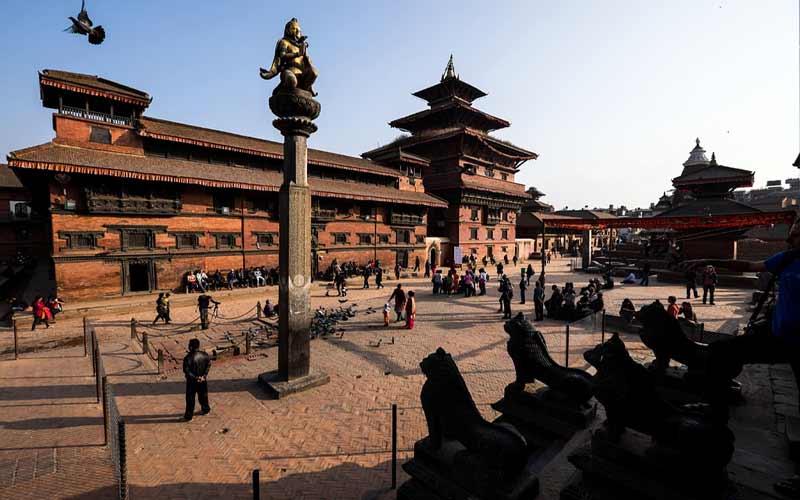
Also known as the Hanuman Dhoka Palace, the Kathmandu Durbar Square is one of the three durbar squares in the Kathmandu Valley. This was the old royal palace and courtyard of the Mallas and Shahs of Kathmandu with a plethora of temples and shrines. The main palace complex was constructed as early as the 15th century while additional buildings and monuments were added as time went on. The notable things to explore here include the namesake monument Hanuman Dhoka, Taleju Mandir, Nine storey Basantapur Tower, Sundari Chowk, Tribhuvan Museum, King Mahendra Memorial Museum and Kal Bhairab temple in its vicinity.
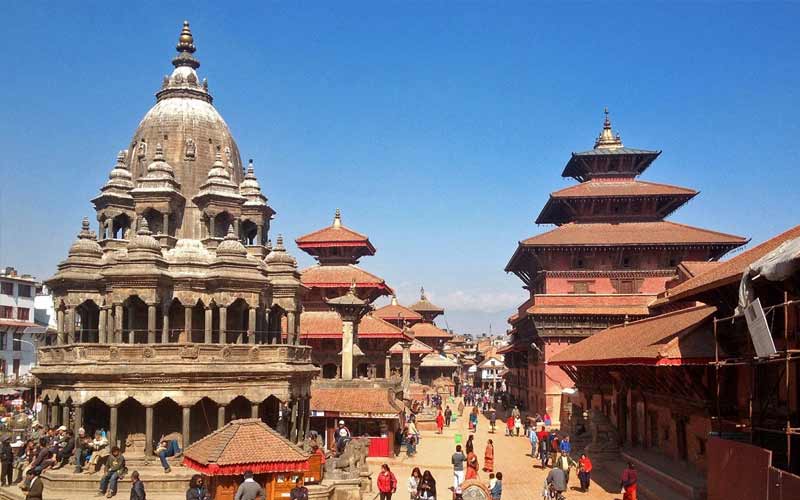
Similar to the Kathmandu Durbar, the Patan Durbar Square is the old palace of the kingdom of Patan/Lalitpur. People believe that the town was named after King Yalamber, as Patan also translates to Yala. It is located around 8 km south-east of central Kathmandu. This palace complex is an excellent showcase of Newari architecture and craftsmanship. The courtyard is dotted with a number of Hindu as well as Buddhist monuments. Historical records have shown that Emperor Ashoka built parts of this Square way back in the 3rd century BCE. The notable places to visit in Patan Durbar Square include the Mahaboudha Temple, Kumbeshwor temple, Krishna Temple, Golden Temple, Jagat Narayan Temple, Hari Shanker temple, Vishwanath temple, Bhimsen temple and Rato Machhendra Temple among others.
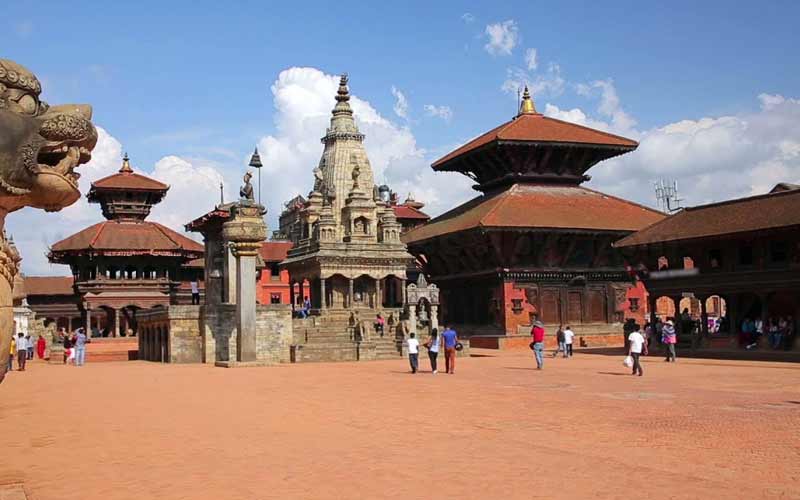
The Bhaktapur Durbar square is the last of the 3 old palaces of Kathmandu. Bhaktapur, also known as Khwopa or Bhadgaon is a medieval city located around 12 km east of Kathmandu. The Durbar Square here is one of the best showcases of Nepali architecture and craftsmanship. The four squares – Durbar Square, Taumadhi Square, Dattatreya Square, and Pottery Square collectively make up the Bhaktapur Durbar square. The most notable landmarks and monuments include the Lions Gate, Golden Gate, Art Gallery, Statue of King Bhupatindra, Nyatapola Temple and fifty-five windowed Malla palace.

Situated around 300 kilometers south west of Kathmandu in the plains of Terai, Lumbini is a religious pilgrimage destination with a lot of history behind it. It was the last of the 4 locations in Nepal to be designated as a UNESCO World Heritage Site (1997). Lumbini is best known as the birthplace of Gautama Buddha. Also known as Siddhartha Gautama or Shakyamuni, Buddha was a Shakya prince from around 3rd - 4th century BCE that spent decades in self-imposed exile and eventually attained enlightenment to become the Buddha. His teaching came to be known as Buddhism and spread all over the world through the years. As such, Lumbini is an immensely important religious site for Buddhists. The major monuments and landmarks to explore here include the Maya Devi Temple, Sacred Garden, World Peace Pagoda, China Temple, Thai Monastery, Burmese (Myanmar) Temple, Nepal Buddha Temple, Dharmaswami Buddhist monastery and Tilaurkot Palace.
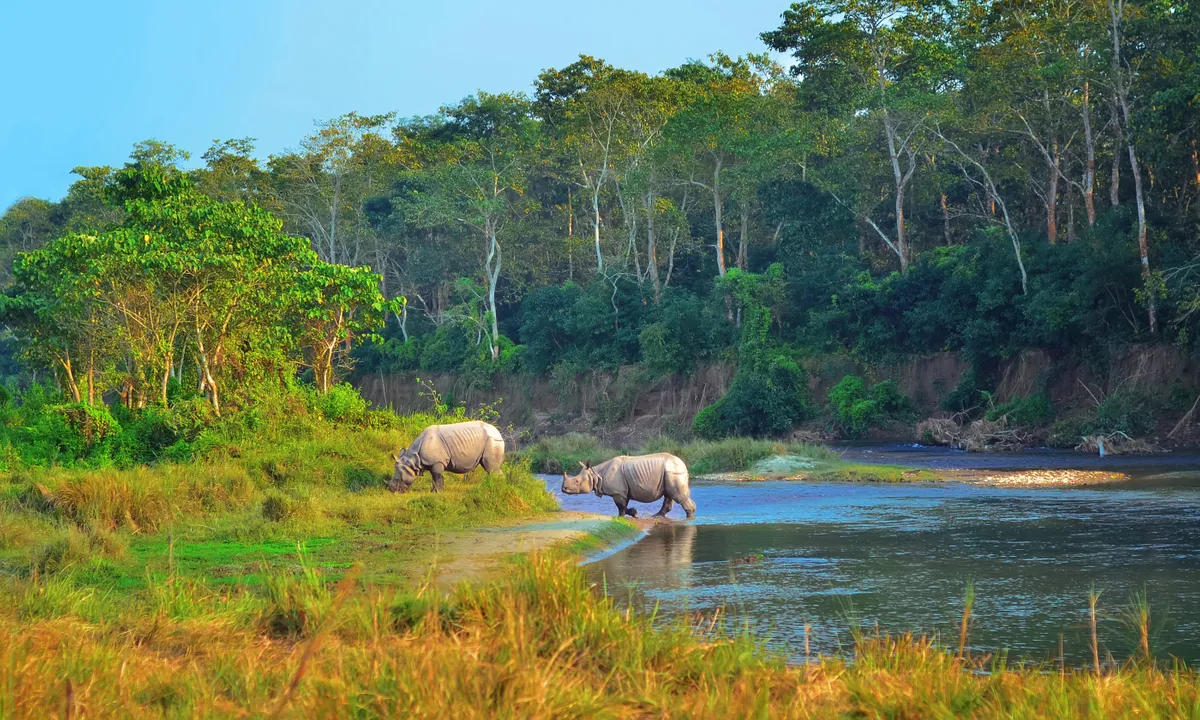
The Chitwan National Park, formerly known as the Royal Chitwan National Park was the first national park of Nepal, being established in 1973. The park stretches over an area of 952 sq. km and has a number of exciting activities to choose from including rafting, canoeing, elephant bathing and of course, Jungle Safari. Jungle Safari in Chitwan is the famous tour package inside this park. It is a sanctuary for over 700 species of wildlife, from mammals and reptiles to rare species of birds as well. The Royal Bengal Tiger and the Asian one-horned rhinoceros are two iconic animals of the Chitwan National Park. In addition to these, Clouded leopards, Sloth Bears, Striped Hyenas, Golden Jackals, Gaurs, Antelopes, Bengal Floricans, Oriental Darters, Kingfishers, Spotted Eagles, King Cobra, Rock Python, Gharials and Crocodiles make up the better known species of this sanctuary.
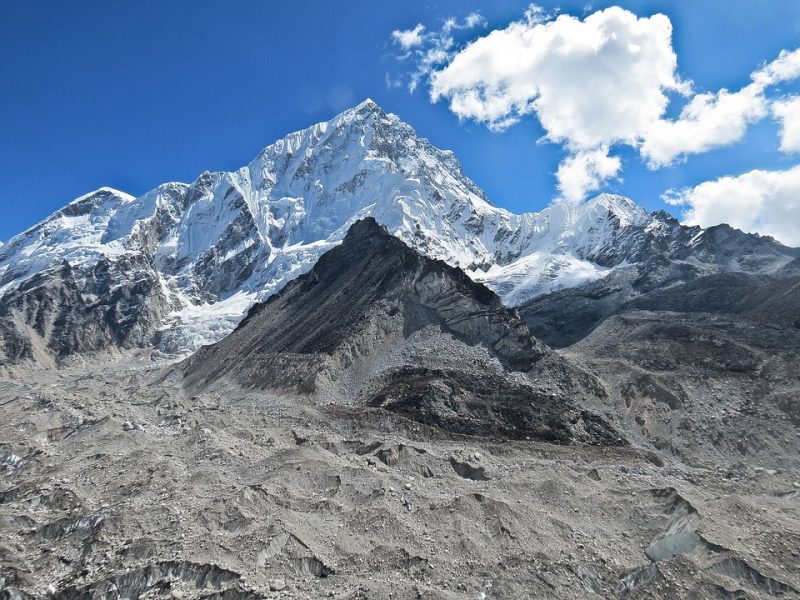
The final place on our list is the Sagarmatha National Park, which is the second National Park of Nepal, being established in the year 1976. Just 3 years after its creation, it was designated as a UNESCO World Heritage Site, owing to the immense amounts of cultural and natural wealth of this region. The most recognizable part of the Sagarmatha National Park would most certainly be Sagarmatha, or Mount Everest, which is the highest peak in the world at 8,848m. Aside from Everest, the region is also home to some of the highest peaks in the world along with stunning glaciers, valleys, rivers and mountains. The park itself stretches over an area of 1,148 sq. km. It is home to a diverse variety of Himalayan flora and fauna including rhododendrons, blue pine, silver fir and birch among others. While exploring the Sagarmatha National Park, there is also the possibility of encountering rare mountain wildlife like snow leopard, pandas, lynx, snow cock, pheasant, snow pigeon etc. There are several trekking and climbing routes famous inside this national park. Everest Base Camp Trek and Mount Everest Expedition is the most amazing trip in the world.